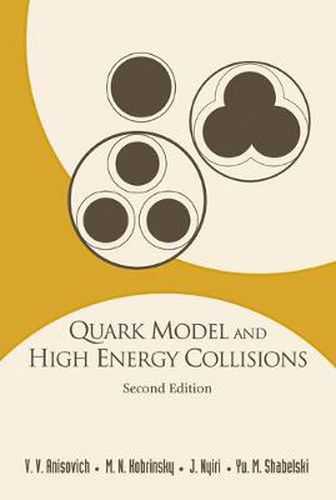Readings Newsletter
Become a Readings Member to make your shopping experience even easier.
Sign in or sign up for free!
You’re not far away from qualifying for FREE standard shipping within Australia
You’ve qualified for FREE standard shipping within Australia
The cart is loading…






This is an updated version of the book published in 1985. Based on QCD, it gives a detailed description of the additive quark model and the rules of quark combinatorics following from it. In the past decade it has become clear that strong QCD, responsible for soft hadronic processes, may differ rather drastically from perturbative QCD. The understanding of strong QCD requires a detailed investigation of the experiments and the theoretical approaches. Bearing this in mind, the book has been rewritten paying special attention to the interplay of soft hadronic collisions and the quark model. It is at the crossroads of these domains that peculiar features of strong QCD reveal themselves. The book discusses constituent quarks, diquarks, the massive effective gluons and the problem of colour scalar mesons. The quark-gluonium classification of meson states is also given. Experimentally observed properties of hadrons are presented together with the corresponding theoretical interpretation in the framework of the composite hadron structure. Attention is focused on the composite structure revealing itself in high energy hadron collisions. Fields of applicability of the additive quark model are discussed, as is colour screening in hadronic collisions at high and superhigh energies. Along with a detailed presentation of hadron-hadron collisions, a description of hadron-nucleus collisions is given.
$9.00 standard shipping within Australia
FREE standard shipping within Australia for orders over $100.00
Express & International shipping calculated at checkout
This is an updated version of the book published in 1985. Based on QCD, it gives a detailed description of the additive quark model and the rules of quark combinatorics following from it. In the past decade it has become clear that strong QCD, responsible for soft hadronic processes, may differ rather drastically from perturbative QCD. The understanding of strong QCD requires a detailed investigation of the experiments and the theoretical approaches. Bearing this in mind, the book has been rewritten paying special attention to the interplay of soft hadronic collisions and the quark model. It is at the crossroads of these domains that peculiar features of strong QCD reveal themselves. The book discusses constituent quarks, diquarks, the massive effective gluons and the problem of colour scalar mesons. The quark-gluonium classification of meson states is also given. Experimentally observed properties of hadrons are presented together with the corresponding theoretical interpretation in the framework of the composite hadron structure. Attention is focused on the composite structure revealing itself in high energy hadron collisions. Fields of applicability of the additive quark model are discussed, as is colour screening in hadronic collisions at high and superhigh energies. Along with a detailed presentation of hadron-hadron collisions, a description of hadron-nucleus collisions is given.